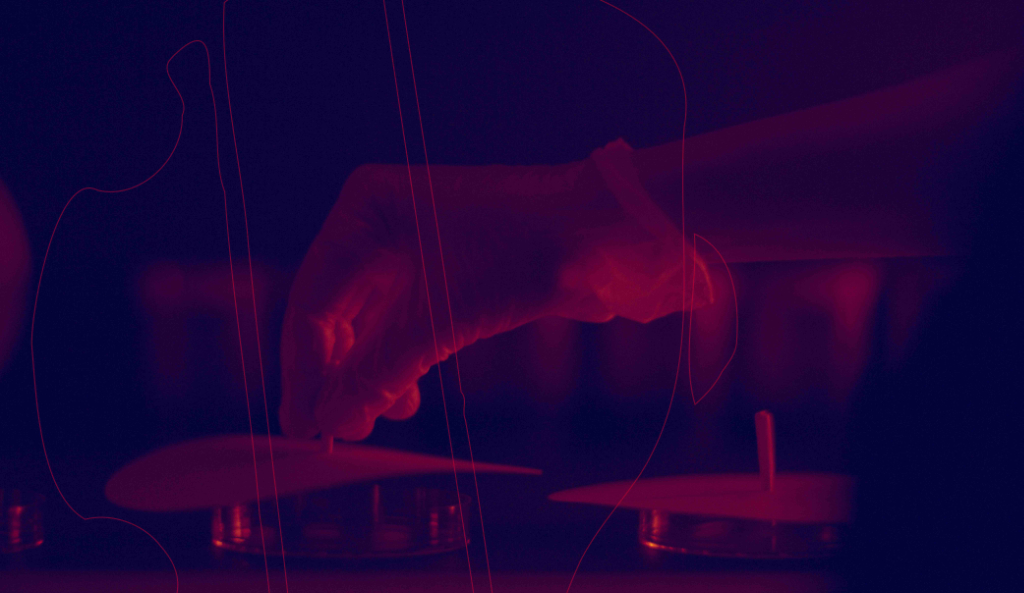Text by Annique Cockerill

It’s true that at this point, it has to be said that they were lost. They had to admit that in order to proceed. They were lost, and they were not scared, but they wanted to understand why they were in this
place, and they wanted to learn from whatever materials they had. Here, this vessel of damp earth.
-Holding Patterns, Saša Spačal (in collaboration with Alison Sperling)
In aviation terminology, a Holding Pattern is the manoeuvre a plane takes to delay landing when the airstrip isn’t clear. A passenger looking out of the window of a flight in holding will look down to see the airport spiralling slowly below them. They might wonder why they’re caught, like water circling the drain, anticipating a landing which will inevitably come.
Airports are strange places. We often think about the planes taking off, the anticipation of new adventures or the thrill of leaving the ground behind. But airports are also a place of touchdown. We think so much about the sky above the airport but little about the ground below. TERRA XENOBIOTICA, a solo exhibition of biomedia artist Saša Spačal, whose new artworks were produced and curated by Art Laboratory Berlin, exists in this space between earth and sky, coming and going, familiar and alien.
The exhibition opened on the 10th of November and is based on Spačal’s bio-artistic research residency at the lab of the Rillig group of Freie Universtität Berlin and Art Laboratory Berlin during autumn 2022 into the soil life at airports. Per- and Polyfluorinated Substances (PFAS) are a group of chemicals used in many industrial and consumer products (including airport fire suppression systems). Referred to as “Forever Chemicals”, PFAS are now being recognised as a growing threat to our health and environment, permeating the soil and destroying its capacity to support life.
Spačal turns this invisible threat into a tangible, multisensory experience in her installation, Eternity Scanner. The piece is a record player of sorts. Instead of grooves on vinyl, the scanner reads the rings and colours on any of the 85 chromatograms that the artist has prepared – one for every year since PFAS were accidentally discovered, with room for more to come. This data feeds the training data of an AI developed to bridge the gap between the data-reliant scientific community and those charged with the day-to-day care of the land, often farmers and gardeners who prefer the visual language of chromatography.
For the layman, these visuals speak for themselves. Pinned to the wall of the gallery, the 85 chromatograms form a Gradient of Eternity, a physical display of how destructive PFAS are to the microbiome. Chromatography is a chemical process that acts as a litmus test for soil life. Rich and living soil bleeds large dark rings, which indicate a complex mix of organic compounds. Polluted soil comes out pale and sterile.



Audience members are invited to choose a chromatogram from the full spectrum that Spačal has displayed and feed the scanner. In doing so, you contribute to training the algorithm and are immersed in the sonification of the data, an eerie but beautiful song that is accompanied by a rotational dance from one or more of the six aeroglyphs (abstractions of the patterns of airports as seen from the sky).
There’s something liminal about the experience. Aesthetically, the installation calls out to the clean curves of white architectural models and the aseptic disinfection of a laboratory. But the interactive experience invites audience members to play a caring role in the soil, giving voice to the soil and championing the living ‘dirty’. All of this is accompanied by the sobering spiral pattern that remains a consistent thread throughout the piece: the rings of the chromatograms, the spinning record, and the rotating aeroglyphs. Behind it all is a heavy sense of dread that we, too, are in a holding pattern before our inevitable downward decline.
Holding Patterns is also the title of the 33-minute-long film written by Spačal and cultural theorist Alison Sperling, which accompanies the installation. Whilst the film functions as documentation for the artist’s research, the content is framed from the perspective of an unknown futuristic entity attempting to decipher the strange markings and the familiar-yet-unknown qualities of an airport no longer in use. The stark, minimalist language contributes to an otherworldly tone – descriptions are observational, mechanical, and yet strangely nostalgic. By closely studying its surroundings, the entity finds belonging in repetition, seeing warnings and chronicles of meaning it can almost grasp in the soil.
We are given no context for why the airport is abandoned, although parts of the film are shot at the now-decommissioned Tempelhofer Feld. Since 2010, the former runways were opened to the public to form one of the largest urban open spaces in the world. Still, the former life of this space remains etched into the landscape and seeping into the soil. The airport takes on richer meanings as it speaks across ages, acting as artefact, achiever, and portal.
At its heart, TERRA XENOBIOTICA is about truly seeing one’s surroundings and understanding the lasting effect we continue to have. It questions our dissociation with our environment and our perceived role as external to the life which blooms beneath our feet. We must accept the uncomfortable tension between our roles of perpetrator and caregiver to an ecosystem we remain a part of.
TERRA XENOBIOTICA is on view at Art Laboratory Berlin until February 4, 2024.





